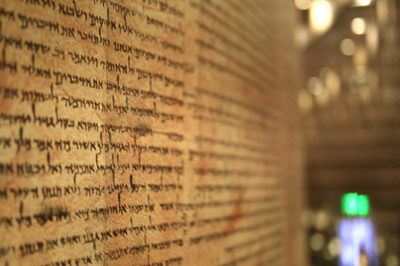French archaeologistDr Alain Zivie, Director of Research at the French National Centre of Scientific Research (CNRS), has devoted many years to investigating the 18th dynasty rock-cut tomb of Aper-el an Egyptian New Kingdom high priest and vizier from the Amarna Period, who served both Amenhotep III and the heretic pharaoh Akhenaten. Zivie discovered it at Saqqara in 1987. In an exclusive video interview, shot by Nico Piazza, he shows Heritage Key some of the abundant treasures hes found there.
As Zivie explains, since the tomb which dates from the latter part of the 18th Dynasty, around 1353-1335 BC is so hard to access, it hasnt been plundered in the modern period, only in ancient times, when the grave robbers werent looking for antiquities. Therefore, many fine pieces have been left undisturbed for centuries, and Zivie and his CNRS team have enjoyed archaeologically rich pickings.
Among the beautiful artefacts he introduces us to from their display case at the Imhotep Museum at Saqqara are two royal cubits (one of which bears an engraving describing Aper-el as “the two eyes of the king”), a hand-painted fish spoon in ivory, and a wonderfully preserved wooden bust probably used for supporting a womans wig.
 This is a miracle, he says of the bust. One season later it would have been disappeared because water was falling down like the Niagara on this, and everything was melted. But we discovered it in time. It is a masterpiece.
This is a miracle, he says of the bust. One season later it would have been disappeared because water was falling down like the Niagara on this, and everything was melted. But we discovered it in time. It is a masterpiece.
Theyre fine artefacts one and all, but Zivie is eager to stress that archaeology, for him, is about so much more than treasure hunting his interest lies in seeking out the stories behind such items, and the light they can shed on the people they were made by and for. We are not looking for treasure; we are not looking for objects, he says. Personally Im looking for history, for facts, for better understanding of this civilization, this culture and this period.
Certainly there are fascinating stories behond the building of the Tomb of Aper-el. Amarna period ruins at Saqqara are extremely rare; Aper-els tomb the entrance to which is through an area known as Abwab el-Qotat (Doors of the Cats), where hundreds of mummified cats had been found interred is perhaps the finest example, and an indicator of the high esteem in which this Egyptian prime minister was held. It bears elegant art work that illustrates the unique style of the Amarna period, a controversial phase of Egyptian history when Akhenten (who was quite possibly King Tuts dad) instituted a controversial rule under one god, which succeeding dynasties attempted to erase from history. Built on four levels, the tomb took years for Zivie and his team to clear completely.
 Aper-el was found buried with his wife, Tauret and his son Huy, who was a pominent general. Both were laid to rest next to Aper-el in similarly beautiful coffins, all of which were located in the funerary chamber of the tomb, which was found concealed behind a staircase. Various articles of funerary equipment and other items were found in the chamber too, including alabaster canopic jars, many jewels and various items of religious and daily use. Paintings elsewhere in the tomb reveal that Aper-el had two other sons who had previously been unknown to ancient historians. They were Seny, who was a high official, and Hatiay, who was a priest.
Aper-el was found buried with his wife, Tauret and his son Huy, who was a pominent general. Both were laid to rest next to Aper-el in similarly beautiful coffins, all of which were located in the funerary chamber of the tomb, which was found concealed behind a staircase. Various articles of funerary equipment and other items were found in the chamber too, including alabaster canopic jars, many jewels and various items of religious and daily use. Paintings elsewhere in the tomb reveal that Aper-el had two other sons who had previously been unknown to ancient historians. They were Seny, who was a high official, and Hatiay, who was a priest.
ArchaeoVideo in HD – The Tomb of Aper-el (Featuring Dr. Alain Zivie)
(Transcription of this video.)
Check out more great archaevideos many of them shot by eminent photographer Sandro Vannini here on Heritage Key. Highlights include Dr Zahi Hawass discussing the restoration of the Synagogue of Moses Ben Maimon in Cairo, a look at prehistoric paintings in Gilf Kebir, Dr Mark Lehner talking about the lives of pyramid builders in ancient Egypt and Dr Salima Ikram describing how Egyptian animal mummies were made.
We regularly release new videos on the site, so sign-up to the Heritage Key RSS feed to be first to hear about each new release(or follow us on Twitter and Facebook), and visit our Youtube channel.



